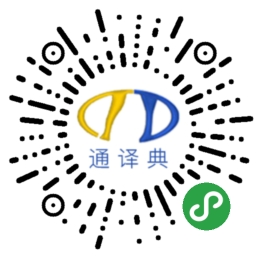译典友情编辑(建议登录会员后操作)

编辑说明:您可以直接修改编辑中英文词条(句子),也可以在备注栏输入补充解释和支持材料,甚至可以上传图片。您编辑的内容将以署名方式展示给其他用户。您的参与,是我们的荣耀。我们建议您先登录/注册本站会员,认领本词条的编辑权。译典的蓬勃发展离不开您的支持。

通译语典文库是一部经典文章集合。通过上下文来限定语句直至词语的语境, 获取最准确的语义,直达翻译佳境!
正文
目录
文库目录
文库收藏
中文百科
Wiki百科
<<快速查询:
属类:时事政治-


音频播放:
《
字+字-
页+页-
原文
(1). Tomato’s Genetic Secrets Are Peeled Away
番茄的基因秘密已被揭开
(2). This is the VOA Special English Agriculture Report.
这里是美国之音慢速英语农业报道。
(3). 1:Scientists have made a genetic map of the tomato.
2:Tomatoes are second only to potatoes as the world’s most valuable vegetable crop.
3:Eight years of work went into making the map, or genome.
4:Three hundred scientists around the world took part in the project to sequence the tomato’s DNA code.
5:Giovanni Giuliano, a researcher in Italy, is part of the Tomato Genome Consortium.
2:Tomatoes are second only to potatoes as the world’s most valuable vegetable crop.
3:Eight years of work went into making the map, or genome.
4:Three hundred scientists around the world took part in the project to sequence the tomato’s DNA code.
5:Giovanni Giuliano, a researcher in Italy, is part of the Tomato Genome Consortium.
1:科学家已经绘制出番茄的遗传图谱。
2:作为全球最宝贵的蔬菜作物,番茄仅次于马铃薯。
3:8年的工作进入了绘制基因图谱的阶段。
4:来自世界各地的300名科学家参与了这一番茄DNA密码测序的项目。
5:意大利研究人员乔瓦尼·朱利亚诺(Giovanni Giuliano)是番茄基因联盟的成员之一。
2:作为全球最宝贵的蔬菜作物,番茄仅次于马铃薯。
3:8年的工作进入了绘制基因图谱的阶段。
4:来自世界各地的300名科学家参与了这一番茄DNA密码测序的项目。
5:意大利研究人员乔瓦尼·朱利亚诺(Giovanni Giuliano)是番茄基因联盟的成员之一。
(4). GIOVANNI GIULIANO: "We started as ten countries and we now are fourteen."
朱利亚诺:“我们一开始有10个国家的科学家参与进来,现在发展到了14个国家。”
(5). Mr. Giuliano says having the tomato’s genetic map will help growers who are always trying to produce a better tomato.
朱利亚诺先生说,有了番茄基因图谱能够帮助种植者生产出更好的番茄。
(6). GIOVANNI GIULIANO: "And of course, this will be facilitated now by the fact that we now know not only what genes are there, but their order."
朱利亚诺:“当然,我们现在不仅知道番茄有哪些基因,还知道它们的基因顺序,这会有所帮助。”
(7). Researchers published the genome of a tomato used by Heinz, the American food company famous for its tomato ketchup. The thick sauce is used on hamburgers, hot dogs and other foods.
研究人员公布了美国亨氏食品公司使用的番茄的基因组,该公司因其番茄酱而著名。这种浓酱被用于汉堡包、热狗和其它食品。
(8). Heinz’s research manager, Rich Ozminkowski, says the company knows what it wants in a tomato.
亨氏公司研究主管Rich Ozminkowski表示,该公司知道自己想要从番茄中得到什么。
(9). RICH OZMINKOWSKI: "Traits like sugars and, for Heinz, viscosity, or the juice thickness, and the redness of the tomatoes are all very critical traits for us, for our products. Those are all controlled by a lot of different genes within a tomato naturally."
RICH OZMINKOWSKI:“对亨氏公司而言,番茄像糖分、粘度或浓度,以及红色色度一类的特性对我们公司的产品来说非常关键。这些特性生来都是由番茄许多不同的基因所控制的。”
(10). Mr. Ozminkowski says genome sequencing takes away much of the guesswork for breeders of tomatoes or other crops that have been mapped.
Ozminkowski先生表示,基因组测序消除了番茄或其它已经绘制基因图谱的作物育种上的许多臆测。
(11). RICH OZMINKOWSKI: "By having the genome information, we can pick out those tomato plants that have more of those genes."
RICH OZMINKOWSKI:“有了基因组信息,我们能够挑选出拥有更多这种基因的番茄植株。”
(12). Until the late nineteen sixties, the tomatoes that Heinz used to make ketchup often cracked open on the vine after a heavy rain.
直到上世纪60年代,亨氏公司用来做番茄酱的番茄经常都会在一场大雨后在藤上开裂。
(13). RICH OZMINKOWSKI: "Heinz had set about trying to put together a variety of tomatoes that would resist that cracking."
RICH OZMINKOWSKI:“亨氏公司当时着手将各种抗开裂的番茄结合起来。”
(14). Breeders used the traditional methods of mating generations of different varieties. The tomatoes they were trying to develop not only had to resist cracking. They also had to resist disease. And they had to be easy to harvest mechanically.
育种使用传统方法使番茄不同品种的后代杂交。他们试图开发的番茄不仅要抗开裂,还要抗疾病。同时还要易于用机械方式收获。
(15). Finally the company came up with the tomato it wanted, called the Heinz 1706. Mr. Ozminkowski says the job would have been much easier if there had been a genetic map to follow.
最终该公司找到了他们想要的番茄,这种番茄被称为亨氏1706。Ozminkowski先生说,如果有一个可以遵循的基因图谱,这项工作原本会容易得多。
(16). RICH OZMINKOWSKI: "The tools available back when 1706 was developed, it was all very, very conventional breeding. There were no genetic tools. You could not look at sequences. You could not do comparisons. And that is what makes the genomic project and the technologies that have spun off of that so interesting."
RICH OZMINKOWSKI:“当年亨氏1706开发成功之时,可以使用的都是非常常规的育种手段。当时没有基因工具。你无法查看基因序列,无法进行对比。而正是这些使得基因工程以及从中分离出来的科技如此有趣。”
(17). But the work is not just about making better ketchup. Climate change may force many crops to adjust to new conditions. And Mr. Ozminkowski says researchers are already using the new genetic tools to help fight new plant diseases.
但这些工作不仅仅是为了做出更好的番茄酱。气候变化可能迫使许多作物去适应新环境。Ozminkowski先生表示,研究人员已经开始使用这些新的基因工具帮助对抗新的植物病害。
(18). RICH OZMINKOWSKI: "And so this is going to give us even more, because there are new diseases that are becoming problems within California and around the world."
RICH OZMINKOWSKI:“因此这将对我们更有利。因为已经有新的病害正在成为加州和世界各地的问题。
(19). Researchers published the tomato genome in the journal Nature.
研究人员将番茄基因组发表在《自然》杂志上。
上页
1
2
3
4
5
6
7
8
9
10
11
12
13
14
15
16
17
18
19
20
21
22
23
24
25
26
27
28
29
30
31
32
33
34
35
36
37
38
39
40
41
42
43
44
45
46
47
48
49
50
51
52
53
54
55
56
57
58
59
60
61
62
63
64
65
66
67
68
69
70
71
72
73
74
75
76
77
78
79
80
81
82
83
84
85
86
87
88
89
90
91
92
93
94
95
96
97
98
99
100
101
102
103
104
105
106
107
108
109
110
111
112
113
114
115
116
117
118
119
下页
会员文库收藏夹,将感兴趣的文章收录此处。注册会员即可以使用此功能
- 加入书架
-
回顶部
- 上一页阅读背景
- 下一页
-
回底部
译典文库友情编辑(建议登录会员后操作)


简典
×
![]()




